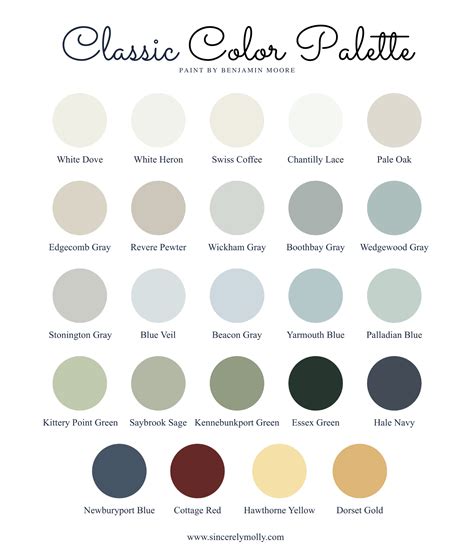The realm of classical colours is a vast and wondrous place, where the nuances of hue and shade have captivated artists, designers, and aesthetes for centuries. From the rich, bold tones of the Renaissance to the soft, ethereal pastels of the Rococo era, classical colours have played a pivotal role in shaping the visual landscape of our world. In this article, we will delve into the world of classical colours, exploring their history, significance, and enduring influence on art, design, and culture.
The Evolution of Classical Colours

Classical colours have their roots in ancient civilizations, where the availability of pigments and dyes dictated the palette of artists and craftsmen. The ancient Greeks and Romans, for example, made extensive use of earth oxides, such as ochre and sienna, to create a range of warm, earthy tones. As trade and cultural exchange expanded, so too did the range of available colours, with the introduction of exotic pigments like lapis lazuli and Tyrian purple. The Renaissance saw a resurgence of interest in classical colours, with artists like Leonardo da Vinci and Michelangelo pushing the boundaries of colour theory and technique.
The Colour Palette of the Renaissance
The Renaissance colour palette was characterized by a range of rich, vibrant hues, including ultramarine blue, crimson red, and golden yellow. These colours were often used in combination with one another to create a sense of depth, dimension, and drama. The use of chiaroscuro, a technique that employs strong contrasts between light and dark, added an extra layer of visual interest to Renaissance art, drawing the viewer’s eye through the composition. As we can see from the works of the great masters, classical colours played a crucial role in shaping the visual language of the Renaissance.
| Classical Colour | Historical Significance |
|---|---|
| Ultramarine Blue | Derived from lapis lazuli, this pigment was highly prized for its deep, rich tone. |
| Crimson Red | Obtained from the cochineal insect, this pigment was used to create a range of vibrant, fire-engine reds. |
| Golden Yellow | Made from the mineral auric sulphide, this pigment was highly valued for its warm, sunny tone. |

Key Points
- Classical colours have a rich history, dating back to ancient civilizations.
- The Renaissance saw a resurgence of interest in classical colours, with artists pushing the boundaries of colour theory and technique.
- The colour palette of the Renaissance was characterized by a range of rich, vibrant hues, including ultramarine blue, crimson red, and golden yellow.
- Classical colours have continued to inspire artists, designers, and aesthetes, shaping the visual landscape of our world in profound and lasting ways.
- Understanding the historical significance and cultural context of classical colours is essential for appreciating their enduring influence on art, design, and culture.
The Influence of Classical Colours on Art and Design

Classical colours have had a profound influence on the development of art and design, shaping the visual language of countless artists, designers, and architects. From the grand, sweeping brushstrokes of Baroque painting to the delicate, intricate patterns of Art Nouveau, classical colours have played a starring role in the creation of some of the most iconic and enduring works of art in history. As we can see from the works of artists like Vincent van Gogh and Paul Cézanne, classical colours continued to inspire and influence artists well into the modern era.
The Role of Classical Colours in Modern Design
Today, classical colours continue to play a vital role in modern design, from the fashion industry to interior design and architecture. Designers like Alexander McQueen and Vivienne Westwood have drawn inspiration from classical colours, incorporating rich, vibrant hues into their designs. Similarly, interior designers like Kelly Wearstler and Nate Berkus have used classical colours to create bold, visually striking spaces that evoke the grandeur and elegance of a bygone era.
In conclusion, classical colours have played a profound and lasting role in shaping the visual landscape of our world. From the ancient civilizations of Greece and Rome to the modern design era, these colours have continued to inspire and influence artists, designers, and aesthetes, shaping the course of art, design, and culture in profound and lasting ways.
What is the historical significance of classical colours?
+Classical colours have a rich history, dating back to ancient civilizations. They were highly prized for their beauty, rarity, and durability, and played a starring role in the development of Western art.
How have classical colours influenced modern design?
+Classical colours continue to play a vital role in modern design, from the fashion industry to interior design and architecture. Designers draw inspiration from classical colours, incorporating rich, vibrant hues into their designs to add depth, dimension, and visual interest.
What are some examples of classical colours?
+Examples of classical colours include ultramarine blue, crimson red, and golden yellow. These colours were highly prized for their beauty, rarity, and durability, and played a starring role in the development of Western art.
Meta description: Discover the rich history and enduring influence of classical colours on art, design, and culture. Explore the evolution of classical colours, from ancient civilizations to modern design, and learn how to incorporate these timeless hues into your own creative projects. (150 characters)



